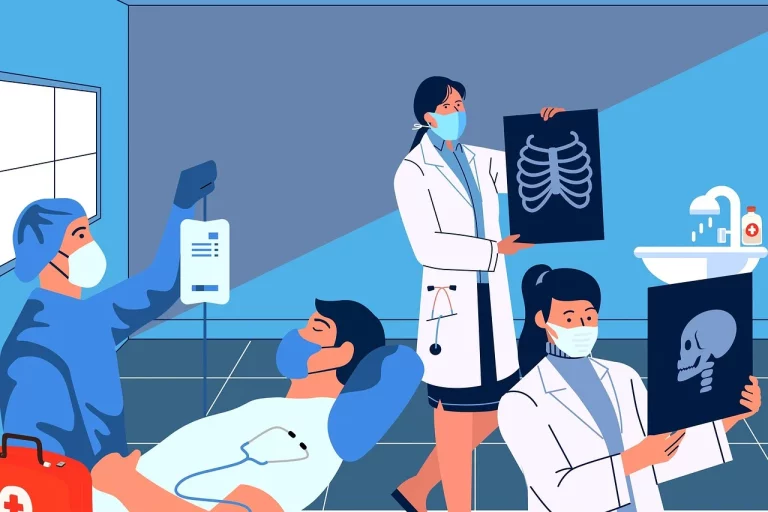Book Appointment Now

Clinical Point of Care and Evidence-Based Practice
The integration of clinical point of care (POC) and evidence-based practice (EBP) is crucial in ensuring that healthcare providers deliver the most effective and current care to patients. Evidence-based practice refers to the conscientious use of current best research evidence, clinical expertise, and patient preferences to guide healthcare decisions. Point-of-care clinicians—those who provide care directly to patients, such as nurses, physicians, and allied health professionals—are often the first to make decisions regarding treatment and care plans. As healthcare rapidly evolves, the need for ongoing education and training in evidence-based practices becomes critical. This paper investigates whether point-of-care clinicians benefit from training on research aspects and explores the impact of such training on their ability to implement evidence-based practice effectively.
Get a custom paper help about clinical point of care and EBP
Order Custom Nursing Paper
The Importance of Point-of-Care Clinicians in Evidence-Based Practice
Point-of-care clinicians play a vital role in applying evidence-based practice to ensure that healthcare delivery is safe, effective, and aligned with the best available research. These professionals make real-time decisions based on clinical guidelines, patient needs, and available evidence. However, the successful integration of evidence-based practice requires clinicians to possess not only clinical skills but also the ability to critically appraise research findings and apply them in practice settings.
Evidence-based practice has been shown to improve patient outcomes by ensuring that treatments and interventions are based on the latest scientific evidence rather than tradition or anecdotal experience. Studies indicate that when clinicians are educated on how to access and evaluate relevant research, they are better able to make informed decisions, thereby enhancing the quality of patient care (Melnyk & Fineout-Overholt, 2019). Thus, the role of point-of-care clinicians in implementing evidence-based practices cannot be overstated.
Training on Research Aspects and its Benefits for Point-of-Care Clinicians
Training on research aspects equips point-of-care clinicians with the necessary tools to interpret and apply scientific studies in their day-to-day practice. These aspects may include research methodologies, statistical analysis, critical appraisal techniques, and how to apply findings to specific clinical contexts. Research training also teaches clinicians to discern high-quality studies from those with potential biases or methodological flaws, ensuring that only the best evidence influences clinical decisions.
A review by Larrabee et al. (2017) suggests that structured training programs aimed at enhancing clinicians’ research literacy significantly improve their confidence in applying evidence-based practices. This confidence translates to more accurate diagnoses, better patient outcomes, and increased adherence to clinical guidelines. Furthermore, clinicians who are trained to incorporate research into their practice are more likely to engage in continuous professional development, staying updated with new findings that could benefit their patients.
Research training also fosters a culture of inquiry within healthcare settings. When clinicians are trained to engage with and contribute to research, they are more likely to advocate for evidence-based changes within their institutions, leading to improved clinical workflows, better decision-making, and enhanced care delivery (Brown et al., 2020).
Impact of Training on Evidence-Based Practice
The impact of research training on evidence-based practice can be observed across several dimensions, including improved clinical decision-making, patient outcomes, and organizational culture. Clinicians who undergo research training tend to demonstrate greater competence in finding, interpreting, and applying evidence in their practice (Melnyk & Fineout-Overholt, 2019). This results in more informed and timely clinical decisions, which directly impact patient care.
For instance, research has shown that when nurses and other point-of-care clinicians are educated on evidence-based protocols for wound care or pain management, patient recovery times decrease, complications are reduced, and overall satisfaction with care improves (Roberts et al., 2018). Training also allows clinicians to tailor evidence-based practices to the specific needs and preferences of their patients, leading to more personalized care.
On a broader level, training in evidence-based practices creates a ripple effect within healthcare institutions. When point-of-care clinicians are equipped with the skills to implement evidence-based practices, they help foster a culture of continuous quality improvement within their teams. This culture encourages collaboration, communication, and shared decision-making, which contribute to overall improvements in healthcare delivery.
Challenges to Implementing Research Training in Point-of-Care Settings
Despite the clear benefits of research training for point-of-care clinicians, several barriers hinder the widespread adoption of such training programs. One of the most significant challenges is the lack of time. Point-of-care clinicians often work in fast-paced environments, and finding time for additional training can be difficult. Additionally, healthcare institutions may face resource constraints, making it challenging to allocate funds or personnel to support comprehensive research training initiatives (Berkowitz et al., 2019).
Another challenge is the varying levels of research literacy among clinicians. Some clinicians may have more advanced education in research methodologies, while others may have limited exposure to research concepts. This disparity can make it difficult to implement standardized training programs that address the needs of all clinicians. To overcome this, tailored training programs that cater to different levels of research knowledge may be necessary.
Moreover, even when training is provided, there may be resistance to change. Clinicians accustomed to traditional practices may be reluctant to adopt new evidence-based approaches, especially if they perceive these changes as time-consuming or complex. Overcoming this resistance requires strong leadership, effective communication, and a clear demonstration of the benefits of evidence-based practices.
Conclusion
Clinical point of care and evidence-based practice are intertwined elements that significantly impact patient care outcomes. Training point-of-care clinicians in research aspects is essential for empowering them to incorporate evidence-based practices into their daily work. The benefits of such training are evident in improved clinical decision-making, better patient outcomes, and the establishment of a culture of evidence-based care. While there are challenges to implementing research training, such as time constraints and resistance to change, the long-term advantages of training clinicians on research methodologies far outweigh these obstacles. With continued investment in education and institutional support, the integration of evidence-based practices will continue to enhance the quality of healthcare worldwide.
References
Berkowitz, S. A., et al. (2019). Barriers to implementing research-based practices in healthcare: A systematic review. Journal of Nursing Administration, 49(4), 234-240.
Brown, L., et al. (2020). Training clinicians in research skills to improve evidence-based practice in healthcare settings. Journal of Clinical Nursing, 29(12), 2185-2193.
Larrabee, J. H., et al. (2017). The impact of research literacy training on the application of evidence-based practices in clinical settings. Research in Nursing & Health, 40(3), 184-192.
Melnyk, B. M., & Fineout-Overholt, E. (2019). Evidence-Based Practice in Nursing and Healthcare: A Guide to Best Practice (4th ed.). Wolters Kluwer Health.
Roberts, L. S., et al. (2018). Improving patient outcomes with evidence-based practices: A case study in pain management and wound care. American Journal of Nursing, 118(6), 42-50.







